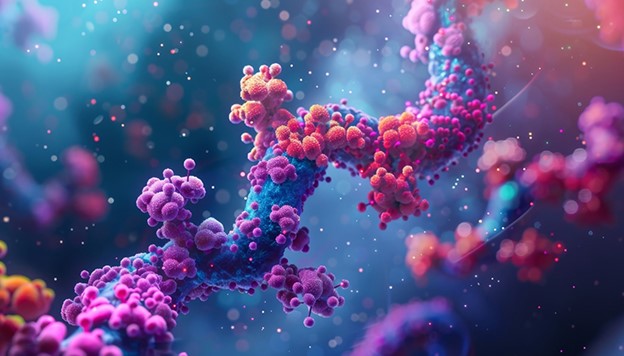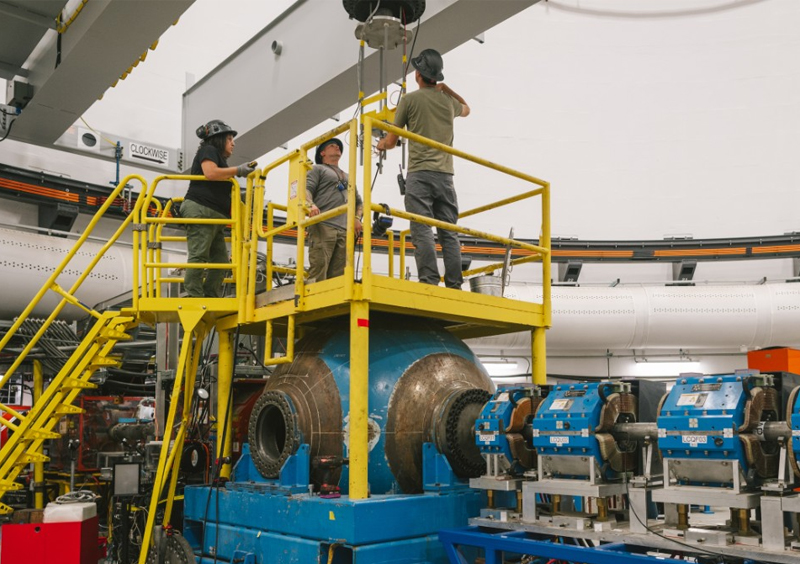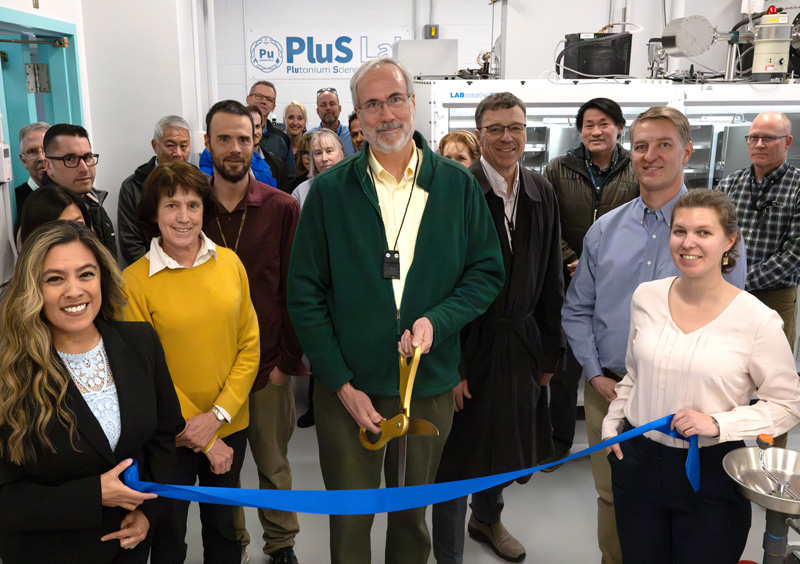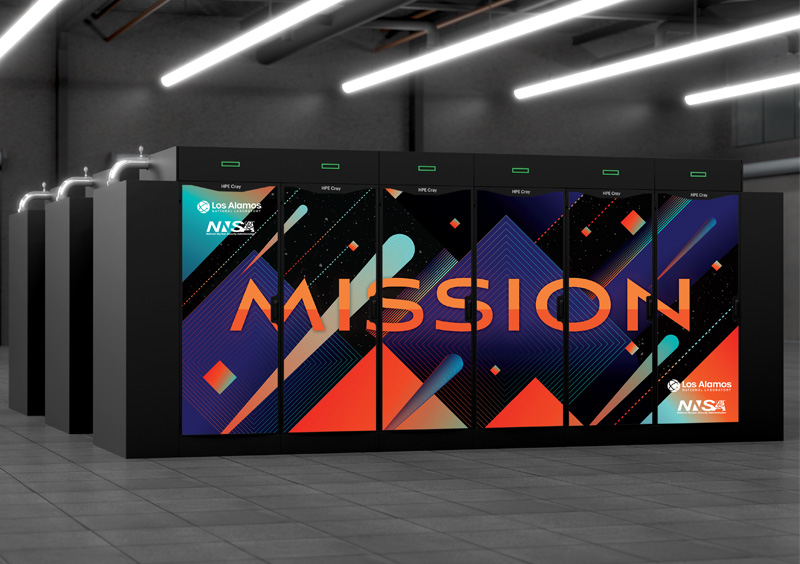In the year following its April 2024 ribbon-cutting, Venado — the Lab's newest, AI-capable supercomputer — racked up an impressive collection of success stories. This four-part series reviews some of the supercomputer's successful applications to high-priority, data-intensive science.
Now, Venado's powerful processing and artificial intelligence capabilities will address the most pressing national security threats as it moves to a classified network.
"The plan for Venado has always been to move it to the secure network," said Mark Chadwick, associate Laboratory director for Simulation, Computation and Theory. "This move happened quickly because of the incredible pace of innovation in AI. These computational and scientific advances for our broad missions will be pursued with our collaborative partners at other national Labs, industry and academia."
Read part one of this series.
Part 2: breaking down the barriers between DNA and disease treatment
Los Alamos’ Theoretical division scientists have created a new artificial intelligence tool that could significantly advance our understanding of DNA and lead to improved treatments for diseases such as cancer. This tool, called EPBDxDNABERT-2, is the first multimodal deep-learning model of its kind. Powered by Venado's advanced computing capabilities, EPBDxDNABERT-2 accurately predicts how proteins interact with DNA — the genetic instruction manual inside every cell that controls how bodies grow, function and respond to disease-causing irregularities.
"Our model combines genetic sequences with the physical features of DNA, such as DNA 'breathing,' when the DNA's double-helix structure opens and closes spontaneously," said Manish Bhattarai, of Physics and Chemistry of Materials. "This integrated approach allows our model to precisely identify where key proteins attach to DNA, pinpointing potential targets for innovative drug therapies."

Better DNA targeting can lead to better disease treatment
Critical proteins called transcription factors (TF) are responsible for turning specific genes on or off. When functioning properly, TFs ensure cells grow and operate correctly. When disrupted, they can contribute to diseases. Because DNA structure is tightly wound, TFs often struggle to locate their correct binding sites. Fortunately, DNA "breathing" makes it easier for them to find the right location to attach. The innovative EPBDxDNABERT-2 model significantly improves predictions of TF binding locations, surpassing older methods by nearly 10%.
These advancements can help researchers precisely isolate DNA regions and proteins involved in disease formation, enabling drug developers to design therapies that effectively target specific genetic areas, in turn potentially reducing side effects and improving patient outcomes.
RELATED: Read the AI issue of 1663 Magazine
Venado enhances Lab capabilities in theoretical biology
According to Bhattarai, the core concept behind this project — the characterization of DNA breathing dynamics — was pioneered at Los Alamos by scientists Boian Alexandrov, Kim Rasmussen and the former Principal Associate Director for Science, Technology and Engineering Alan Bishop, now retired.
"Building upon this foundational research, we've leveraged modern computational methods and high-performance hardware resources to dramatically expand our analytical capabilities, enabling the analysis of extensive, genome-scale DNA sequences," Bhattarai said.
Venado's exceptional processing power enables simultaneous analysis of multiple data types — such as genetic sequences and DNA structural dynamics — critical to training advanced multimodal deep-learning models such as EPBDxDNABERT-2. This capability enabled the team to accelerate the research dramatically, culminating in three impactful publications within a single year. Specifically, the development and thorough validation of advanced models were feasible solely due to Venado's advanced GPU architecture, which provided both the speed and precision crucial to achieving high-quality research outcomes.
"Without Venado, our predictive models would have been substantially less accurate, significantly slower to train and potentially impossible to validate at their current complexity," Bhattarai said.
Transitioning to Chicoma
The team remains dedicated to producing comprehensive genome-wide TF binding predictions as they shift their project to Chicoma, another high-performance computer at the Laboratory. In collaboration with computational biologists, the team aims to facilitate drug discovery processes and deliver critical insights into biological mechanisms. In the next couple of years, the team's research will progress to identifying novel genetic markers and potential drug targets. These discoveries will directly support advancements in personalized medicine with the aim of transforming patient care and treatment outcomes.
"The opportunity to transform health care by deepening our understanding of DNA-protein interactions — the fundamental drivers of many diseases — is incredibly motivating," Bhattarai said. "We find profound personal satisfaction in seeing our theoretical research translated into practical outcomes, potentially leading to improved quality of life."
More from Los Alamos National Laboratory:
Part 1: Venado's yearlong voyage power vital AI science
Venado installation opens the door for AI applications at Los Alamos
Students get quantum computing mentorship and research experience






